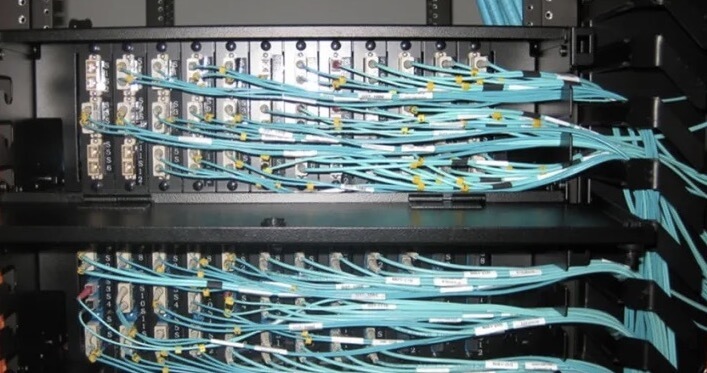As a data center professional, you know that high-density patching solutions are crucial to ensure efficient and reliable connectivity. And fiber patch cables are essential to this infrastructure. But with so many options available, it can be challenging to choose the right fiber patch cables for your high-density data center. This guide will walk you through 6 key considerations to keep in mind when selecting the best fiber patch cables for your high-density data center.
1. Understanding High-Density Patching
High-density patching refers to a patching solution that utilizes high-density fiber patch panels and fiber optic cables to accommodate a larger number of connections in a smaller space compared to traditional patching solutions. This type of patching offers several benefits to data centers, including increased efficiency due to reduced cabling costs, easier management and organization of cables, and improved airflow and cooling.
To overcome the challenges of high-density patching, fiber patch cables offer high flexibility, reduced diameter, and bend radius. These features ensure that the cables can be installed and maintained in a small space without causing issues such as cable congestion, increased heat, or cable damage.

2. Considerations for High-Density Fiber Patch Cables
2.1 Evaluating the physical characteristics of high-density fiber patch cables
When evaluating fiber patch cables specifically designed for high-density environments, it’s essential to consider the physical characteristics, connector types, and performance specifications. Opt for smaller diameter cables with tighter bend radii and jacket materials that are more resistant to environmental factors, such as heat and moisture.
2.2 Evaluating connector types and performance specifications of high-density fiber patch cables
Connector types and performance specifications of high-density fiber patch cables are also crucial factors to consider. Look for factors like connector polish, insertion loss, and return loss. APC connectors typically have lower insertion and return losses than UPC connectors, while MTP/MPO connectors offer higher density. Aim for insertion loss below 0.5 dB and return loss above 50 dB for optimal performance.
2.3 Ensuring compatibility with your data center’s equipment and infrastructure
To ensure compatibility, select fiber patch cables that match the type and polarity of the equipment’s fiber connectors. It’s also essential to verify the cable length and connector orientation to ensure proper routing and installation within the data center infrastructure.
2.4 Evaluating the scalability of your high-density data center and choosing fiber patch cables that can accommodate future growth
Investing in high-density fiber patch cables requires considering the long-term viability of your data center’s infrastructure. To evaluate the scalability of a high-density data center, consider factors such as the number of ports available in patch panels and switches, available rack space, and the potential for future expansion. Choose fiber patch cables with longer lengths and higher port counts to accommodate future growth. For example, selecting MTP/MPO cables with 12, 24, or 48 fibers can provide greater scalability than traditional LC patch cables.
2.5 Ensuring durability and reliability of high-density fiber patch cables
To ensure the durability and reliability of high-density fiber patch cables, choose cables with robust construction and high-quality materials, and follow best practices for installation and maintenance. Regular inspections and cleaning can prevent contamination and signal degradation. Using reputable vendors and manufacturers can also ensure high-quality cables that are less likely to fail prematurely.
2.6 Staying up-to-date on emerging trends and technologies in high-density patching
Staying up-to-date on emerging trends and technologies in high-density patching is essential to ensure that your data center remains competitive and innovative. Research industry publications, attend conferences, and network with professionals. Working with knowledgeable suppliers and partners can also provide valuable insights, training, and data to optimize patching strategies and offer early access to new products and features.
3. Conclusion
Choosing the right fiber patch cables for your high-density data center is essential for maintaining a reliable and efficient infrastructure. By keeping these key considerations in mind, you can make an informed decision that meets your data center’s unique needs and helps ensure long-term success. Consider partnering with reputable patch cable vendors and manufacturers and staying up-to-date on emerging trends and technologies to stay competitive and innovative in the fast-evolving world of high-density patching.




